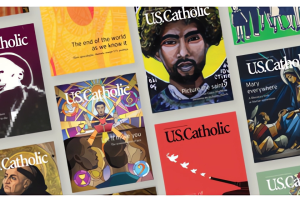c. 2013 USA Today
(RNS) Americans are opening their wallets and providing financial relief to the typhoon-battered Philippines at a pace that may be the third-highest ever for an overseas disaster, but still not enough to satisfy needs.
As Philippine officials try to get aid to desperate Typhoon Haiyan victims, relief organizations from the Salvation Army to Mercy Corps are reporting strong initial donations from individual donors. Corporate donations and government aid have also been robust.
“International disasters like this where the scenes we’re seeing on the news are so overwhelming, people want to reach out and help,” says Salvation Army spokesman Ron Busroe. Donations accelerated from $300,000 Monday to about $1 million by Tuesday, Busroe says.
Patrick Rooney, associate dean at Indiana University’s Lilly Family School of Philanthropy, expects individual donations to relief agencies to top out at about $1 billion, exceeded only by the $1.5 billion donated after the 2010 Haitian earthquake and the $1.8 billion following the 2004 tsunami that devastated Indonesia. The international relief donations trail the $4.2 billion given following 2005′s Hurricane Katrina and $2.6 billion following the Sept. 11 terror attacks. (All numbers are adjusted for inflation).
Despite the outpouring of generosity, organizations such as the Philippine Nurses Association of America are scrambling to set up donor pages online. UNICEF has sent out an appeal for $34 million to help 4 million children impacted by the typhoon, saying funding is urgently needed for food, medicine, clean water and sanitation. UNICEF has taken in $4.6 million in donations the past three days, vs. $12.3 million it received from donors in the same period following the Haiti quake and $5.4 million it received within three days of the 2004 tsunami.
Save The Children, which issued an appeal for $30 million, has raised over $1 million so far. The organization is sending 12,000 blankets, 2,500 kitchen sets, four mobile clinics and other items, says spokeswoman Francine Uenuma.
Typically, 75 percent of donations come within three to six months of a disaster.
“One of the drivers is how much attention the media provides and if the attention is sustained,” Rooney says. “To the extent that it looks like there’s a need for help, people donate.”
While technology makes it easier to donate, text donations tend to be limited to $10 — well below the $50 median households give, Rooney says. “It increases the number of people who give, but decreases the amount given.”
Boston-based OxFam America has received about $1.5 million from over 10,200 donors, says spokeswoman Helen DaSilva. “We’ve seen a huge spike in people taking action,” she says. “People respond and care about what’s going on in the world.”
Oxfam, which raised about $29 million from U.S. donors for Haitian relief, hopes to provide fresh water and basics such as soap to about 500,000 Filipinos. Tuesday, an Oxfam team assessed devastated Daanbantayan, a town on the northern tip of Cebu.
“The scene is one of utter devastation,” said Oxfam team member Tata Abella-Bolo. “The immediate need is water, both for drinking and both for cleaning.”
Mercy Corps has raised more than $500,000 over the past two days. Despite a series of natural disasters overseas and in the U.S., Mercy Corps chief development officer Jeremy Barnicle says there’s no donor fatigue. Destruction and death, particularly in poverty stricken regions, spur donors, Barnicle says.
Handicap International has taken in $60,000. Elizabeth MacNairn, executive director of the organization’s U.S. operations, says 74 Philippine staffers are prioritizing efforts in the hardest-hit areas. The elderly and children with disabilities are often overlooked and cannot get to normal relief distribution points.The organization provides wheelchairs and crutches, much of it from pre-stocked sites in France and Dubai.
Still, given the large area of destruction and lack of access to hard-hit areas, the organization welcomes what it can get. “Sudden onset disasters tend to elicit a quick donor response, but needs are often massive and require a long-term response,” MacNairn says.
The Mennonite Central Committee, which raised more than $5 million in the U.S. for relief aid following the Haitian earthquake, has already received $120,000 in online donations for the Philippines, says MCC disaster response director Bruce Guenther. About $50,000 has been earmarked for food, basic hygiene items and support for assessment teams.
“Donations started quite slow, but driven by media coverage, it’s really picked up,” Guenther says. Additional funding will be provided to a 10-member team that heads to hard hit Leyte island Wednesday.
Ben Smilowitz, executive director of the Disaster Accountability Project, a watchdog organization which tracks relief efforts, notes that donor contributions for specific disasters may be earmarked elsewhere by relief organizations. Those who want donations intended for the Philippines may want to find a Philippine-based organization and donate directly via pay services such as PayPal, he says.
(Gary Strauss writes for USA Today.)










